![の – Possession and Noun Linking in Japanese [JLPT N5]](http://hirakan.com/cdn/shop/articles/no-possession-and-noun-linking.jpg?v=1761961297&width=1100)
の – Possession and Noun Linking in Japanese [JLPT N5]
Share
Quick Summary
- Meaning: Links two nouns to show possession, belonging, or description. Often reads as “’s” or “of.”
- How to Use: N1 の N2 → “N2 of N1 / N1’s N2.”
- Example:
- 忍者のケーキです。
- Ninja no keeki desu.
- It is a ninja’s cake.
Overview
The particle の connects two nouns. The first noun gives information about the second. Think “N1’s N2” or “N2 of N1.” In English, we usually say “my friend’s book” or “the door of the car.” In Japanese, the order is the same for “’s” and the reverse of “of”: 車のドア (kuruma no doa, the car’s door / the door of the car).
Use の for:
- Ownership: さくらの本 (Sakura no hon, Sakura’s book)
- Relationships: 父の友だち (chichi no tomodachi, my father’s friend)
- Part–whole: 家の屋根 (ie no yane, the house’s roof)
- Origin / place / time: 日本の映画 (Nihon no eiga, a Japanese movie); 朝のニュース (asa no nyuusu, the morning news)
- Material / type: 木の机 (ki no tsukue, a wooden desk); 音楽の本 (ongaku no hon, a book about music)
You can also drop the second noun when it’s clear from context and just say N1 の to mean “N1’s (one).” For example, さくらのです (Sakura no desu, it’s Sakura’s). To ask “whose,” use だれの (dare no, whose).
Structure / Formation
Base Formulas
- N1 + の + N2
- だれ + の + N
- N1 + の (N2 omitted when obvious)
Pattern Map
| Slot | Role | English idea |
|---|---|---|
| N1 | Possessor / descriptor | Owner, origin, time, material, category |
| の | Linking particle | “of” / “’s” |
| N2 | Main noun | The thing you are identifying |
Basic N1 の N2
Use N1 の N2 to show “N2 of N1.” Keep N2 as the main focus. For example, 学校 (gakkou, school) + の + 先生 (sensei, teacher) → 学校の先生 (gakkou no sensei, a teacher at the school).
- 社長のサボテンです。
- Shachou no saboten desu.
- It is the CEO’s cactus.
Dropping the Second Noun (N1 の)
When the second noun (N2) is obvious, replace it with just の. This means “N1’s (one).”
- このサボテンは社長のです。
- Kono saboten wa shachou no desu.
- This cactus is the CEO’s.
Asking “Whose” with だれの
Use だれの before a noun to ask ownership or belonging. Answer with the same pattern: Name の N or just Name の.
- だれのロボットですか。
- Dare no robotto desu ka.
- Whose robot is it?
Usage Tips
- Think “focus on N2.” N2 is the main thing you’re talking about; N1 just describes it.
- English order may flip. “The door of the car” = 車のドア (kuruma no doa), not “ドアの車.”
- Names, places, times, and materials all work as N1: さくらの, 学校の, 朝の, 木の.
Example Sentences
- 学校の図書館のロボットです。
- Gakkou no toshokan no robotto desu.
- It is the school library’s robot.
- 宇宙人の帽子は話します。
- Uchuujin no boushi wa hanashimasu.
- The alien’s hat talks.
- チョコレートの家は夏にとけます。
- Chokoreeto no ie wa natsu ni tokemasu.
- The chocolate house melts in summer.
- このペンギンは先生のです。
- Kono pengin wa sensei no desu.
- This penguin is the teacher’s.
- だれのドラゴンですか。
- Dare no doragon desu ka.
- Whose dragon is it?
Quick Practice
(Answers and explanations are right under this section.)
Multiple-Choice
1. Choose the correct polite sentence: “Sakura’s robot is fast.”
- A. さくらのロボットは速いです。(Sakura no robotto wa hayai desu.)
- B. さくらやロボットは速いです。(Sakura ya robotto wa hayai desu.)
- C. さくらのロボットを速いです。(Sakura no robotto o hayai desu.)
- D. さくらとロボットは速いです。(Sakura to robotto wa hayai desu.)
2. Choose the correct polite question: “Whose penguin is this?”
- A. これはだれのペンギンですか。(Kore wa dare no pengin desu ka.)
- B. これはだれペンギンのですか。(Kore wa dare pengin no desu ka.)
- C. これはだれやペンギンですか。(Kore wa dare ya pengin desu ka.)
- D. これはだれのペンギンです。(Kore wa dare no pengin desu.)
3. Choose the correct polite sentence using N1 の (N2 omitted): “This cake is the teacher’s.”
- A. このケーキは先生のです。(Kono keeki wa sensei no desu.)
- B. このケーキは先生です。(Kono keeki wa sensei desu.)
- C. このケーキは先生とです。(Kono keeki wa sensei to desu.)
- D. このケーキは先生の。(Kono keeki wa sensei no.)
4. Choose the correct sentence: “That is the car’s door.”
- A. それは車のドアです。(Sore wa kuruma no doa desu.)
- B. それはドアの車です。(Sore wa doa no kuruma desu.)
- C. それは車とドアです。(Sore wa kuruma to doa desu.)
- D. それは車ののドアです。(Sore wa kuruma no no doa desu.)
5. Choose the correct translation: “It is the school library’s book.”
- A. 学校の図書館の本です。(Gakkou no toshokan no hon desu.)
- B. 学校と図書館の本です。(Gakkou to toshokan no hon desu.)
- C. 図書館の学校の本です。(Toshokan no gakkou no hon desu.)
- D. 学校の図書館の本などです。(Gakkou no toshokan no hon nado desu.)
Spot-the-Error
6. Which sentence has an error with の? Choose the incorrect sentence.
- A. 車のドアです。(Kuruma no doa desu.)
- B. 日本の映画です。(Nihon no eiga desu.)
- C. 先生のの本です。(Sensei no no hon desu.)
7. Find the sentence with a missing の.
- A. 学校先生です。(Gakkou sensei desu.)
- B. 木の机です。(Ki no tsukue desu.)
- C. 朝のニュースです。(Asa no nyuusu desu.)
Translation
8. Translate into Japanese using の: “Whose hat is that?”
9. Translate into Japanese using の (N2 omitted): “This penguin is the teacher’s.”
10. Translate into Japanese using の: “I watch the morning news.”
Answers and Explanations
- A. さくらのロボットは速いです。(Sakura no robotto wa hayai desu.) — の correctly shows possession: Sakura’s robot.
- A. これはだれのペンギンですか。(Kore wa dare no pengin desu ka.) — だれの directly modifies ペンギン to ask “whose.”
- A. このケーキは先生のです。(Kono keeki wa sensei no desu.) — N2 is omitted and replaced by の, and the sentence stays polite with です.
- A. それは車のドアです。(Sore wa kuruma no doa desu.) — Correct N1 の N2 order: “the car’s door.”
- A. 学校の図書館の本です。(Gakkou no toshokan no hon desu.) — Chaining の links “school” → “library” → “book.”
- C. 先生のの本です。(Sensei no no hon desu.) — Double の is incorrect; it should be 先生の本です。(Sensei no hon desu.)
- A. 学校先生です。(Gakkou sensei desu.) — It is missing の between the nouns; the correct form is 学校の先生です。(Gakkou no sensei desu.)
- あれはだれの帽子ですか。(Are wa dare no boushi desu ka.) — Use だれの before the noun to ask “whose.”
- このペンギンは先生のです。(Kono pengin wa sensei no desu.) — の replaces the obvious noun (ペンギン) to mean “the teacher’s (one).”
- 朝のニュースを見ます。(Asa no nyuusu o mimasu.) — の links the time word 朝 to ニュース to show “morning news.”
Related Posts
-
![か – Forming Questions and Saying “Or” in Japanese [JLPT N5]](//hirakan.com/cdn/shop/articles/ka-questions.jpg?v=1763787134&width=170)
か – Forming Questions and Saying “Or” in Japanese [JLPT N5]
Quick Summary Meaning: The particle か turns a sentence into a question, or can mean “or” when choosing between thin...
-
![も – Saying “Also” and “Too” in Japanese [JLPT N5]](//hirakan.com/cdn/shop/articles/mo-also-too_99f908e6-78d0-4f82-8319-391ef42764bc.jpg?v=1763787251&width=170)
も – Saying “Also” and “Too” in Japanese [JLPT N5]
Quick Summary Meaning: The particle も means “also,” “too,” or “even.” It shows that something is the same as someth...
-
![と – Linking 'And', 'With', and Quotations in Japanese [JLPT N5]](//hirakan.com/cdn/shop/articles/to-and-with-quotation.jpg?v=1763265110&width=170)
と – Linking 'And', 'With', and Quotations in Japanese [JLPT N5]
Quick Summary Meaning: と links things like “A and B,” marks doing something with someone, and shows a quotation (“…,”...
-
![で – Marking Where and How an Action Happens in Japanese [JLPT N5]](//hirakan.com/cdn/shop/articles/de-where-how-action-happens.jpg?v=1763264973&width=170)
で – Marking Where and How an Action Happens in Japanese [JLPT N5]
Quick Summary Meaning: で marks the location where an action happens or the means/tool/method used to do something...
-
![へ – Marking Direction ‘Toward’ in Japanese [JLPT N5]](//hirakan.com/cdn/shop/articles/he-marking-direction.jpg?v=1762667986&width=170)
へ – Marking Direction ‘Toward’ in Japanese [JLPT N5]
Quick Summary Meaning: The particle へ marks direction or “toward” a place or person. It points where something is hea...
-
![に – Marking Time, Destinations, and Recipients in Japanese [JLPT N5]](//hirakan.com/cdn/shop/articles/ni-marking-destination.jpg?v=1762667846&width=170)
に – Marking Time, Destinations, and Recipients in Japanese [JLPT N5]
Quick Summary Meaning: The particle に marks a point in time (at/on), a destination you reach (to/into), or a target/r...
-
![を – Marking the Direct Object in Japanese [JLPT N5]](//hirakan.com/cdn/shop/articles/o-direct-object.jpg?v=1761960990&width=170)
を – Marking the Direct Object in Japanese [JLPT N5]
Quick Summary Meaning: を marks the direct object — the thing that receives the action of a verb. It’s pronounced ...
-
![が – Marking the Subject ('Who/What') in Japanese [JLPT N5]](//hirakan.com/cdn/shop/articles/ga-subject-marker_60f30f70-6ca5-47ee-9a00-3646195d7d3c.jpg?v=1761386355&width=170)
が – Marking the Subject ('Who/What') in Japanese [JLPT N5]
Quick Summary Meaning: The particle が marks the subject of a sentence and highlights new or focused information (an...
-
![は (wa) – Topic Marker and Contrast in Japanese [JLPT N5]](//hirakan.com/cdn/shop/articles/wa-topic-marker.jpg?v=1761385996&width=170)
は (wa) – Topic Marker and Contrast in Japanese [JLPT N5]
Quick Summary Meaning: Marks the topic of the sentence — what you’re talking about. Often feels like “as for...” in E...
-
![じゃない・ではありません – Expressing 'Is/Was Not' in Japanese [JLPT N5]](//hirakan.com/cdn/shop/articles/janai-dehaarimasen_2594963b-531e-4f4d-a9b0-361010e0a720.jpg?v=1760865884&width=170)
じゃない・ではありません – Expressing 'Is/Was Not' in Japanese [JLPT N5]
Quick Summary Meaning: The negative of the copula “to be.” Say “is not” or “was not” with nouns and na-adjectives. Ho...
-
![だ・です/だった・でした – Saying ‘to be’ in Japanese [JLPT N5]](//hirakan.com/cdn/shop/articles/da-desu-datta-deshita_58bbc732-53fd-48da-83c7-4e477e7cc0b2.jpg?v=1760864506&width=170)
だ・です/だった・でした – Saying ‘to be’ in Japanese [JLPT N5]
Quick Summary Meaning: The Japanese copula — the basic “to be.” It links a topic to a noun or a na-adjective to state...
-

Common Japanese Onomatopoeia: Essential Words You’ll Hear Everywhere
If you spend any time in Japan, you’ll hear onomatopoeia everywhere: on TV, in everyday conversations, in manga, and ...
-

How to Say “To Increase” and “To Decrease” in Japanese: With Examples
You've noticed there are multiple ways to say “to increase” or "to decrease" in Japanese. Between transitive and intr...
-

How to Say "Police Officer" in Japanese: Common Terms and Slang
There are several ways to say "police officer" in Japanese, and each one has a different level of formality and usage...
-
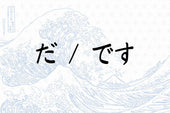
Understanding だ (da) and です (desu) in Japanese: Meaning and Usage
When learning Japanese, one of the first things you’ll come across is だ (da) and です (desu). These words don’t have a ...
-
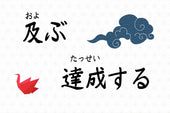
Difference Between 及ぶ (およぶ) and 達成する (たっせいする)
Both 及ぶ and 達成する can relate to "reaching" or "achieving" something, but they have distinct nuances and usage contexts...
-

JLPT N5 Study Guide: A Beginner's Roadmap to Acing the Test
If you’ve just started learning Japanese and are aiming to ace the JLPT N5, you’ll need a solid study guide to help y...
-

Beginner's Guide to Japanese Particles: Learn the Basics
TL;DR: Japanese particles are crucial for structuring sentences, acting like conjunctions or prepositions in English...
-

JLPT N5 Vocabulary List - All 748 Words You Need to Know
Vocabulary is the foundation of any language, and Japanese is no exception. The more you know, the better. Over time ...
-

JLPT N4 Kanij List - All 176 Characters You Need To Know
After mastering the JLPT N5 kanji, you're ready to take your Japanese kanji game to the next level. JLPT N4. Let's go...
-
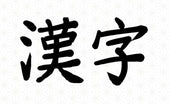
Kanji For Kanji - 漢字
Inception time. Which kanji compose the kanji of "kanji"? The kanji for "kanji" is actually pretty straightforward. I...
-

How to Memorize Katakana Easily: 9 Tips for Beginners
For those diving into Japanese, mastering hiragana and katakana is the first significant challenge. While hiragana o...
-

Complete Hiragana and Katakana Chart With All 112 Characters
The very first step for everybody who wants to learn Japanese is to study the hiragana and katakana chart (before lea...
-
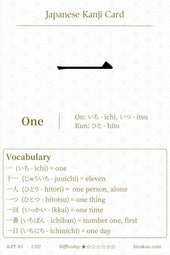
JLPT N5 Kanji: Kanji For One 一 (ichi)
Probably one the most simple kanji to remember, the kanji for 'one' is simply written '一'. Let's see its readings and...
-
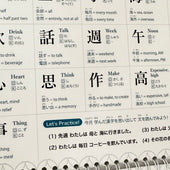
How Long Does It Take to Learn Kanji? A Beginner's Guide
Ask any Japanese student what's the scariest part of learning the language, and they'll say kanji. And they're righ...
-

Is it Necessary to Learn Kanji? The Last Answer You'll Ever Need
Many beginners in Japanese wonder whether they should really learn kanji. I know this, because I also wondered when s...
-

How Long Does it Take to Learn Hiragana and Katakana?
As a beginner in Japanese, your first step is diving into the alphabets of Hiragana and Katakana. These are the build...
-

13 Best YouTube Channels to Learn Japanese, From Beginner to Intermediate
YouTube can be an incredible resource for learning Japanese. And best of all, it's free. So we've compiled a list of ...
-
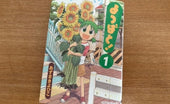
Top 10 Manga for Japanese Language Learners: From Beginners to Intermediates!
If you're learning Japanese, chances are you're interested in manga. So instead of reading texts about Tanaka-san s...
-
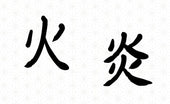
Kanji for 'Fire' in Japanese: 火 or 炎?
Welcome to our enlightening exploration of Japanese kanji! Today, we're igniting our understanding of a primal force ...
-

The Complete Guide to Country Names in Japanese: Say and Pronounce Them Right!
Whether you're planning a trip, learning Japanese, or just curious about how different countries are represented in a...
-
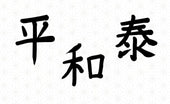
Kanji for Peace: 平, 和, 泰 - The Symbols of Harmony
You might be wondering what are the Japanese symbols for 'Peace'. In this article, we're diving deep into this univer...
-
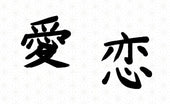
Kanji for 'Love': How and When to Use 愛 and 恋
Welcome to our journey into the world of Japanese kanji! Today, we're delving into one of the most heartwarming and p...
-
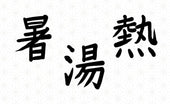
Kanji for 'Hot' in Japanese: 暑, 湯, and 熱 - A Comprehensive Guide
Welcome to our journey into the world of Japanese kanji! Today, we're going to delve into an exciting and essential c...
-
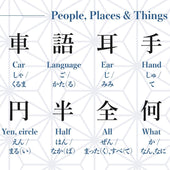
JLPT N5 Kanji List - All 112 Characters You Need To Know
Below we've listed all 112 JLPT N5 level kanji along with their English meaning, readings, and two accompanying vocab...

![か – Forming Questions and Saying “Or” in Japanese [JLPT N5]](http://hirakan.com/cdn/shop/articles/ka-questions.jpg?v=1763787134&width=170)
![も – Saying “Also” and “Too” in Japanese [JLPT N5]](http://hirakan.com/cdn/shop/articles/mo-also-too_99f908e6-78d0-4f82-8319-391ef42764bc.jpg?v=1763787251&width=170)
![と – Linking 'And', 'With', and Quotations in Japanese [JLPT N5]](http://hirakan.com/cdn/shop/articles/to-and-with-quotation.jpg?v=1763265110&width=170)
![で – Marking Where and How an Action Happens in Japanese [JLPT N5]](http://hirakan.com/cdn/shop/articles/de-where-how-action-happens.jpg?v=1763264973&width=170)
![へ – Marking Direction ‘Toward’ in Japanese [JLPT N5]](http://hirakan.com/cdn/shop/articles/he-marking-direction.jpg?v=1762667986&width=170)
![に – Marking Time, Destinations, and Recipients in Japanese [JLPT N5]](http://hirakan.com/cdn/shop/articles/ni-marking-destination.jpg?v=1762667846&width=170)
![を – Marking the Direct Object in Japanese [JLPT N5]](http://hirakan.com/cdn/shop/articles/o-direct-object.jpg?v=1761960990&width=170)
![が – Marking the Subject ('Who/What') in Japanese [JLPT N5]](http://hirakan.com/cdn/shop/articles/ga-subject-marker_60f30f70-6ca5-47ee-9a00-3646195d7d3c.jpg?v=1761386355&width=170)
![は (wa) – Topic Marker and Contrast in Japanese [JLPT N5]](http://hirakan.com/cdn/shop/articles/wa-topic-marker.jpg?v=1761385996&width=170)
![じゃない・ではありません – Expressing 'Is/Was Not' in Japanese [JLPT N5]](http://hirakan.com/cdn/shop/articles/janai-dehaarimasen_2594963b-531e-4f4d-a9b0-361010e0a720.jpg?v=1760865884&width=170)
![だ・です/だった・でした – Saying ‘to be’ in Japanese [JLPT N5]](http://hirakan.com/cdn/shop/articles/da-desu-datta-deshita_58bbc732-53fd-48da-83c7-4e477e7cc0b2.jpg?v=1760864506&width=170)























